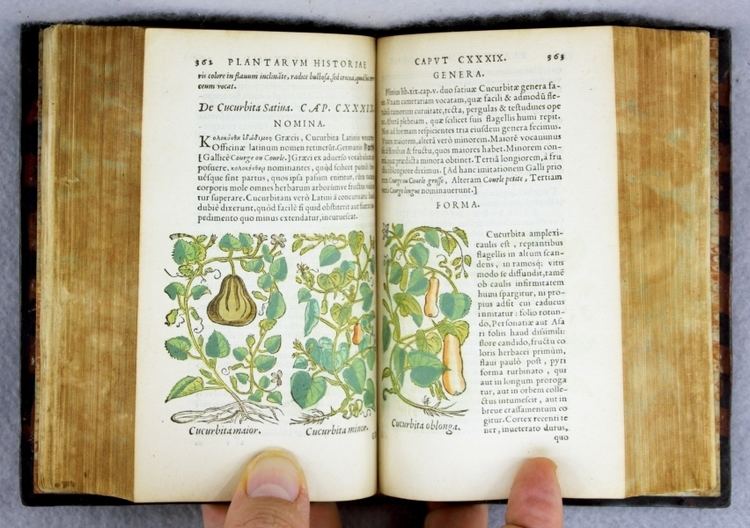Language Latin Publication date 1542 Originally published 1542 Page count 896 Genres Folio, Herbal | Publisher Isingrin, Basel Pages 896 Country Switzerland | |
 | ||
Botany books Historia Plantarum, Leonhart Fuchs: The New Her, Vienna Dioscurides, Hortus Eystettensis, Genera Plantarum | ||
De Historia Stirpium Commentarii Insignes (Notable Commentaries on the History of Plants) is a book by Leonhart Fuchs on herbal plants published in Basel in 1542. It was illustrated by: Albrecht Meyer, who made drawings based on the actual plants; Heinrich Füllmaurer, who transferred the drawings to woodblock; and Vitus Rudolph Speckle, who cut the blocks and printed the drawings. It covers about 497 plants and has over 500 woodcut illustrations. Over 100 of the plants in the book were first descriptions. The University of Glasgow states that it is considered a landmark work in its field. Stanford University Press considers it one of the best illustrated books of all time and a masterpiece of the German Renaissance. It set a new standard for accuracy and quality, as well as being the first known publication of plants from the Americas, such as pumpkin, maize, marigold, potato, and tobacco. Plants were identified in German, Greek, and Latin, and sometimes English. The book was initially published in Latin and Greek and quickly translated into German. Just during Fuchs' lifetime the book went through 39 printings in Dutch, French, German, Latin, and Spanish and 20 years after his death was translated into English.
